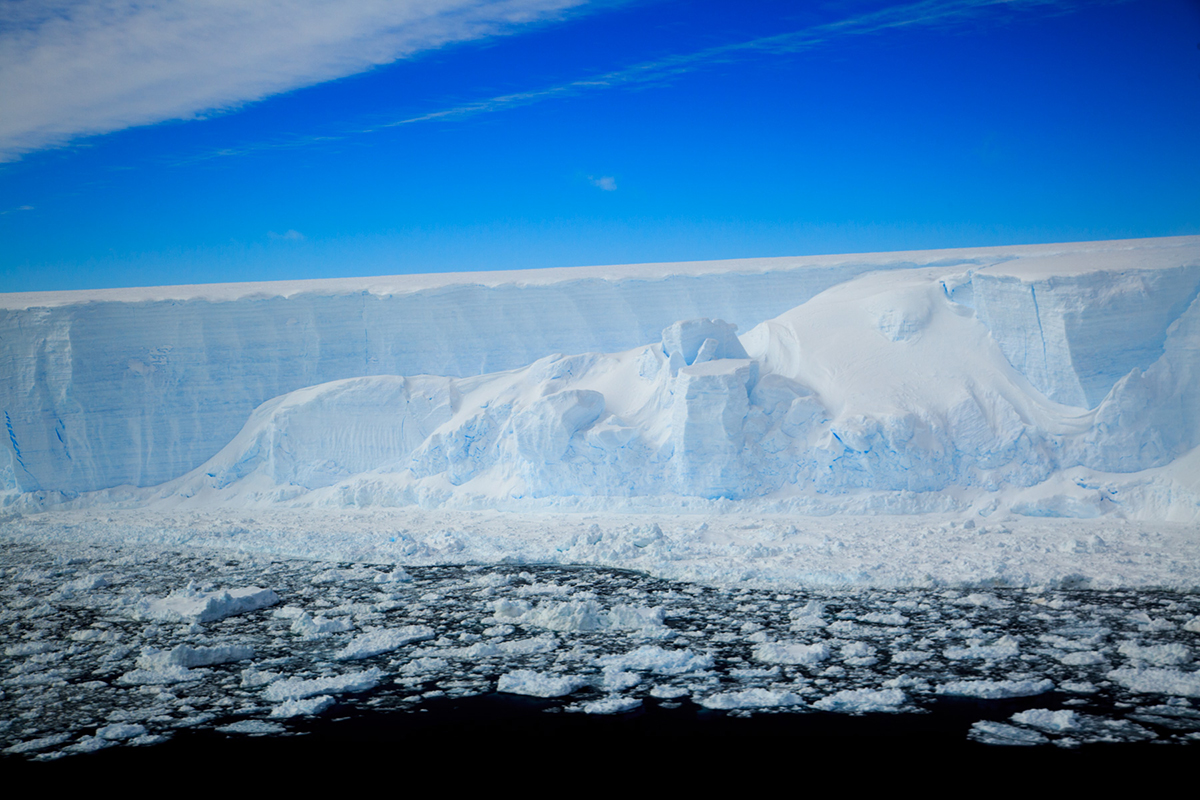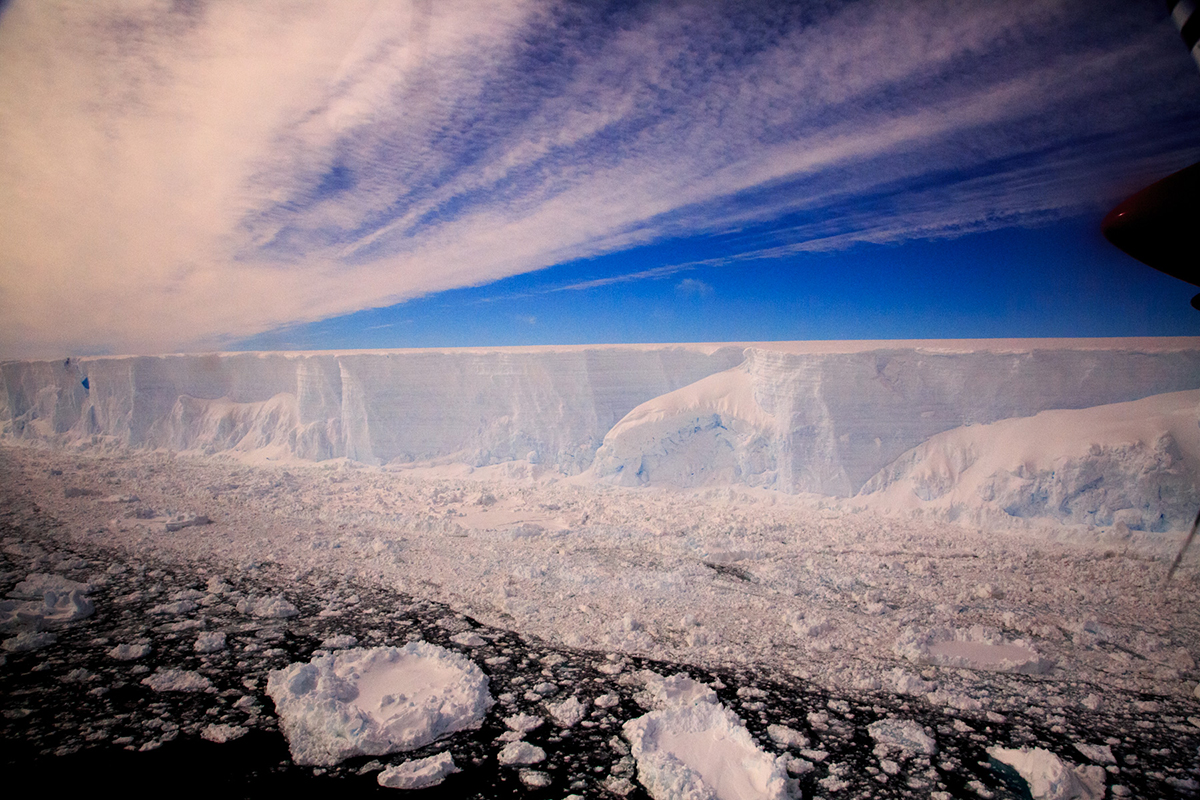Monster Antarctic Iceberg Gets Its Big Break in First-of-Its-Kind Video
The British Antarctic Survey has released the first-ever video footage of an enormous iceberg as it broke off from an Antarctic ice shelf in July 2017.
To capture the incredible video and stills, cameras carried by helicopters circled over and around the iceberg, called A-68, as it continued to move into the Weddell Sea, away from the Larsen C ice shelf. The massive iceberg weighs an estimated 1 trillion tons and spans more than 2,300 square miles (6,000 square kilometers). It has been described as about the size of Delaware, twice the size of Luxembourg or roughly four times the size of London.
Whatever your frame of reference, the newly released video and images confirm that A-68 is an impressive sight. Seen from the sky as the helicopter flies alongside the iceberg, A-68 towers above the sea ice surrounding it. Though it is about 623 feet (190 meters) thick, only about 100 feet (30 m) of it is visible above the ocean surface, British Antarctic Survey (BAS) representatives said in a statement. [In Photos: Antarctica's Larsen C Ice Shelf Through Time]
Larsen C, where A-68 originated, was one of Antarctica's largest ice shelves. These vast structures build up over thousands of years, forming when ice sheets and glaciers on land flow past the coastline and over the ocean. By contrast, sea ice forms on the ocean surface when seawater freezes and is typically just a few meters thick.

In 2010, a large crack formed on Larsen C's western peninsula. The crack grew for years; scientists monitored it for years with satellites as it gradually expanded. A second crack appeared in May 2017, further weakening the shelf.
By June 2017, only 8 miles (13 km) of ice tethered the iceberg-to-be to Larsen C, and when the big break happened between July 10 and July 12 of last year, giant iceberg A-68 was born. When it separated and drifted away from the ice shelf, Larsen C lost approximately 10 percent of its surface area; this is the smallest the shelf has measured since record keeping began in the 1960s, according to the BAS.
Researchers tracking A-68 reported in August 2017 that it had traveled about 3 miles (5 km) from Larsen C and that it was breaking apart even further, with smaller "bergy bits" calving from the larger iceberg. The biggest of these minibergs measured about 8 miles long, BAS representatives said in a statement released that month.
Sign up for the Live Science daily newsletter now
Get the world’s most fascinating discoveries delivered straight to your inbox.
Over the past two decades, Antarctica's western peninsula has suffered substantial ice loss in three of its ice shelves, Live Science previously reported. Though there is no simple explanation for why Larsen C fractured, atmospheric warming trends and changes in the surrounding ocean due to climate change may have contributed to the shelf's collapse, BAS representatives reported in the statement.
However, such upheavals could also be part of the ice shelf's normal cycle, according to the BAS.

Researchers are now scrambling to take advantage of a rare opportunity to investigate portions of the seabed near Larsen C that were covered in ice for more than 120,000 years and were recently exposed after A-68's departure. And they are racing to do so before exposure to sunlight brings new species to the water and changes these mysterious environments.
Meanwhile, A-68 continues on its ocean journey, drifting away from its icy source. Recent computer simulations suggest that the loss of A-68 did not significantly weaken Larsen C, but scientists will continue to monitor the monster iceberg and its parent ice shelf, to better understand the impacts of significant calving events on Antarctic ocean ecosystems.
Original article on Live Science.

Mindy Weisberger is an editor at Scholastic and a former Live Science channel editor and senior writer. She has reported on general science, covering climate change, paleontology, biology and space. Mindy studied film at Columbia University; prior to Live Science she produced, wrote and directed media for the American Museum of Natural History in New York City. Her videos about dinosaurs, astrophysics, biodiversity and evolution appear in museums and science centers worldwide, earning awards such as the CINE Golden Eagle and the Communicator Award of Excellence. Her writing has also appeared in Scientific American, The Washington Post and How It Works Magazine. Her book "Rise of the Zombie Bugs: The Surprising Science of Parasitic Mind Control" will be published in spring 2025 by Johns Hopkins University Press.










